#Lotus Temple Design
Text
Are You Looking for the Best Temple architecture in India?

Temple architects in India - alacritys think that temple architecture sites should have peaceful or airy and also make according to Vastu, Vastu plays a specific role in Hindu Temples. Our professionals provide the best lotus temple design and stone temple designs. Choose the best temple architecture in Pune!
#Temple Architect in India#Temple architecture in India#Alacritys Architects in Pune#Lotus Temple Design#Stone Temple Design
0 notes
Text

Fariborz Sahba
Lotus Temple, India, 1986
Photo: MD_JERRY
#fariborz sahba#lotus temple#organic architecture#expressionist architecture#contemporary architecture#architecture#architectural design
15 notes
·
View notes
Text
April 13, Xi'an, China, Shaanxi Archaeology Museum/陕西考古博物馆 (Part 5 - Tang dynasty, Song dynasty, and later):
Happy Mid-Autumn to everyone!
First up is again an undisputed star of the museum, the gold crown of Li Zhui/李倕. Li Zhui was the 5th generation descendant of Li Yuan/李渊, aka Emperor Gaozong of Tang, the first emperor of Tang dynasty (618 - 907 AD). It's speculated that this crown was what the Tang-era term "轻金冠" (lit. "light gold crown") was referring to. The crown itself wasn't just gold, however, it also had parts of silver, copper, and iron, decorated with pearls, mother of pearl, agate, turquoise, rubies, amber, ivory, and glass.
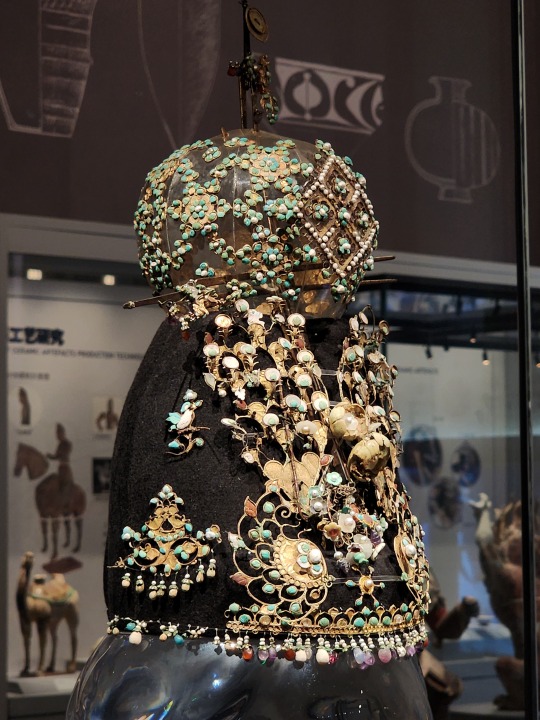
And it wasn't just a crown either. There were other pieces that were part of her outfit:
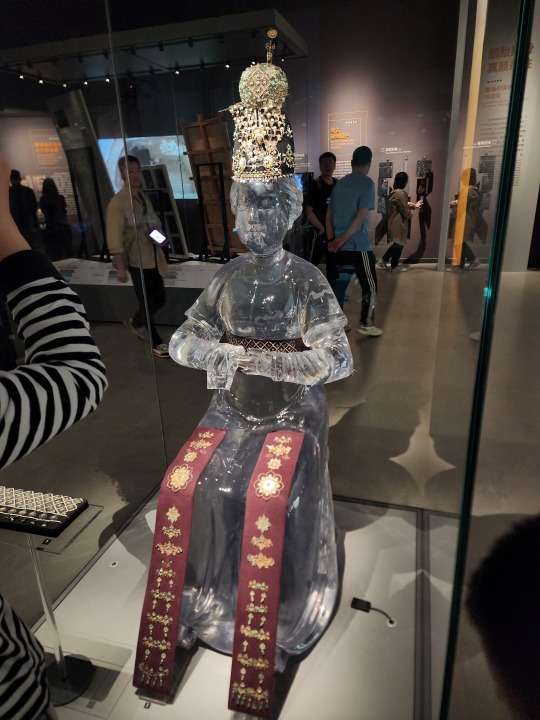


Various Tang-era gold and silver thread embroidery pieces found in the crypt of Famen Temple/法门寺, the plaque is visible in many of these so I won't be naming them all. There's a saying among Chinese archaeologists: "dry things last a thousand years, wet things last ten-thousand years, half-wet half-dry things last half a year" ("干千年,湿万年,不干不湿就半年"). This refers to the conditions the artifacts/remains were in over time, stable conditions usually preserve artifacts and remains better than changing conditions. Fabric-based artifacts are notoriously hard to preserve, especially in Xi'an's "half-wet half-dry" climate, so these are a rare sight:
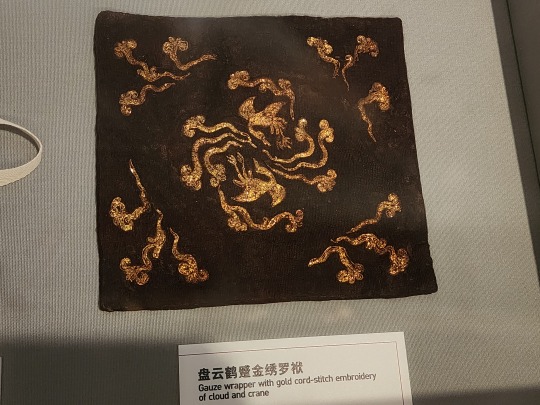
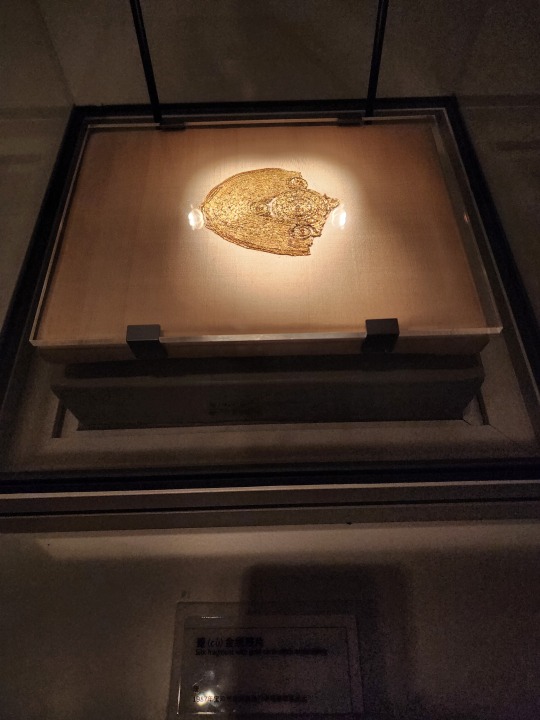
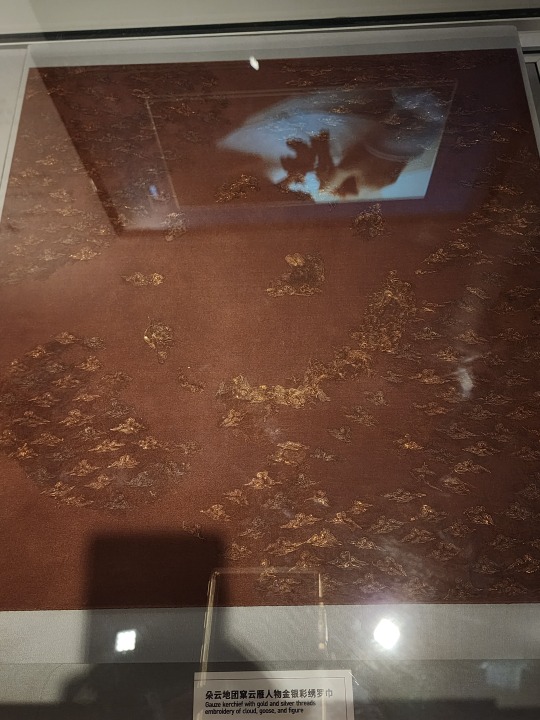
Note that the bird and flower design on the right is actually not an embroidery, but designs woven straight into the fabric:

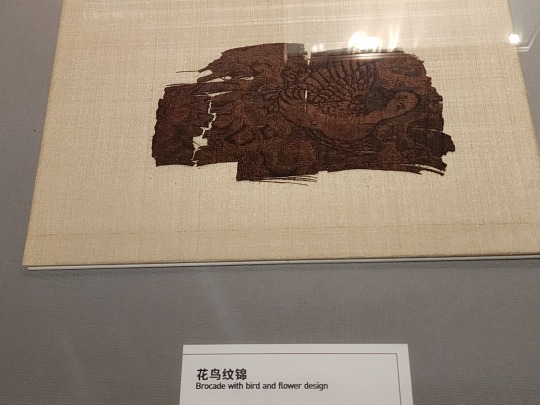
The gold threads used in these embroideries were made by wrapping long strips of gold foil around thread through the turning of these hook-shaped tools.
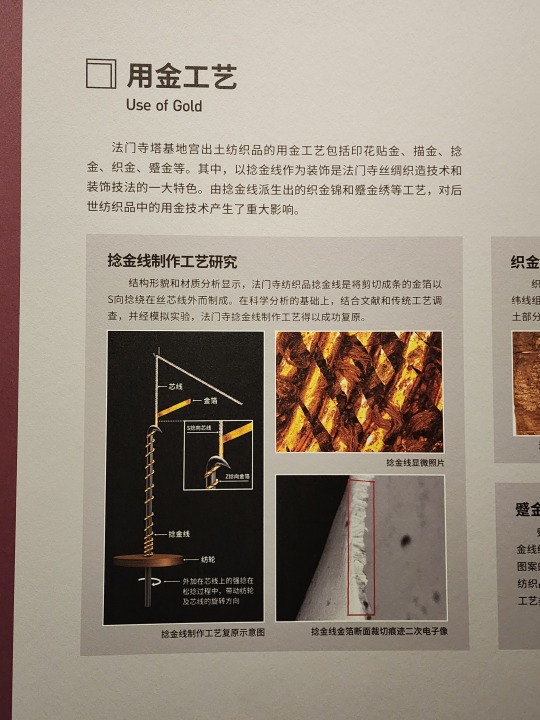
The gold threads produced from the above process were mainly used in two ways, either woven into the fabric (top), or embroidered onto fabric (bottom). The kind of embroidery here is called cujinxiu/蹙金绣, which uses gold threads and a technique that is similar to couching
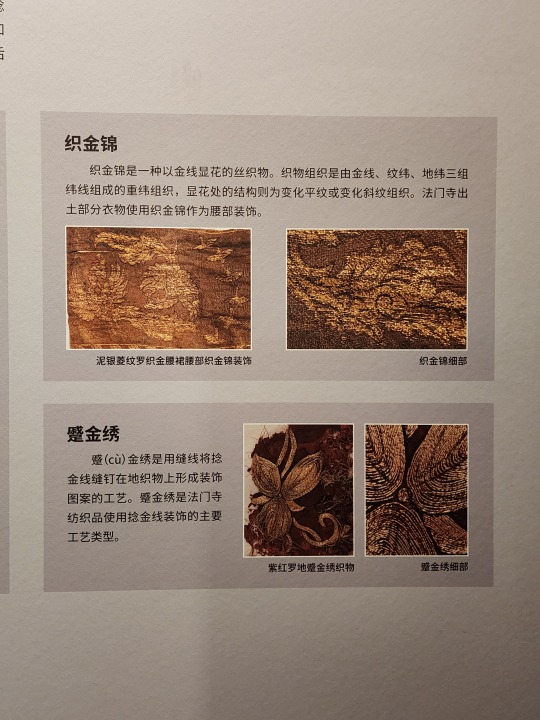
Models of the microscopic structure of different types of silk fabric found in Famen Temple. In common usage today, the term sha/纱 often refers to light, almost see-through polyester fabrics, but in the past this term refers exclusively to a type of light silk fabric. However, the other ones listed here (ling/绫, luo/罗, juan/绢, jin/锦) almost always refer to silk fabrics.
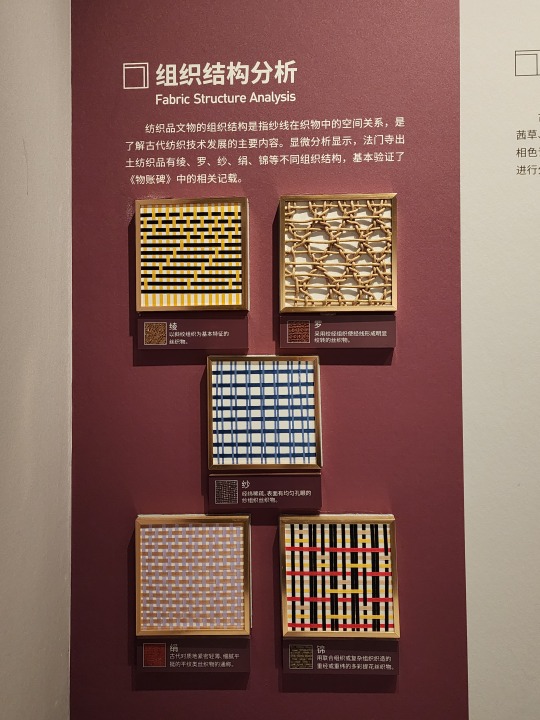
Different types of motifs/patterns found on artifacts throughout time. Left is the evolution of juancaowen/卷草纹 ("curled plant motif") from Tang dynasty to Jin dynasty (1115 - 1234). Right is the evolution of lianhuawen/莲花纹 ("lotus flower motif") from Northern Song dynasty (960 - 1127) to Yuan dynasty (1206 - 1368).
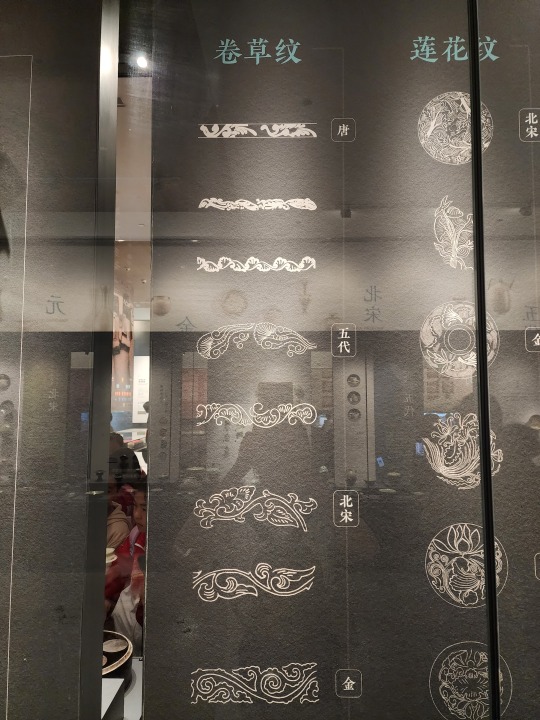
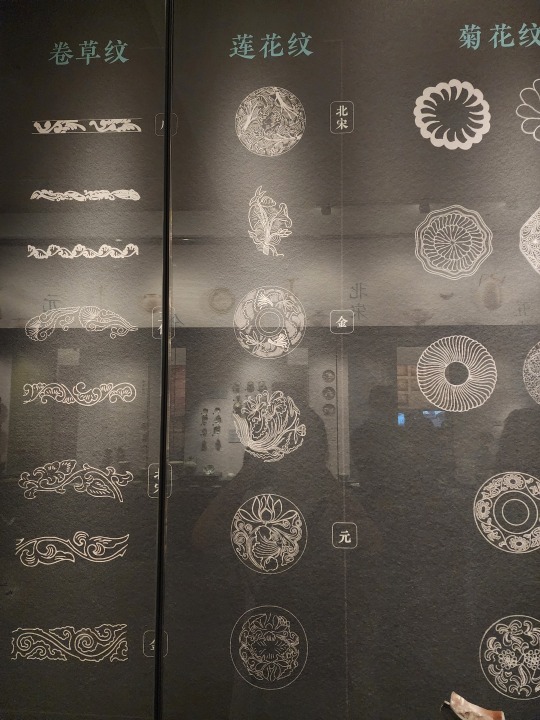
Left: evolution of juhuawen/菊花纹 ("chrysanthemum flower motif") from Tang dynasty to Yuan dynasty. Right: evolution of mudanwen/牡丹纹 ("moutan peony motif") from Tang dynasty to Yuan dynasty, and the evolution of youyuwen/游鱼纹 ("swimming fish motif") from Northern Song dynasty to Yuan dynasty.
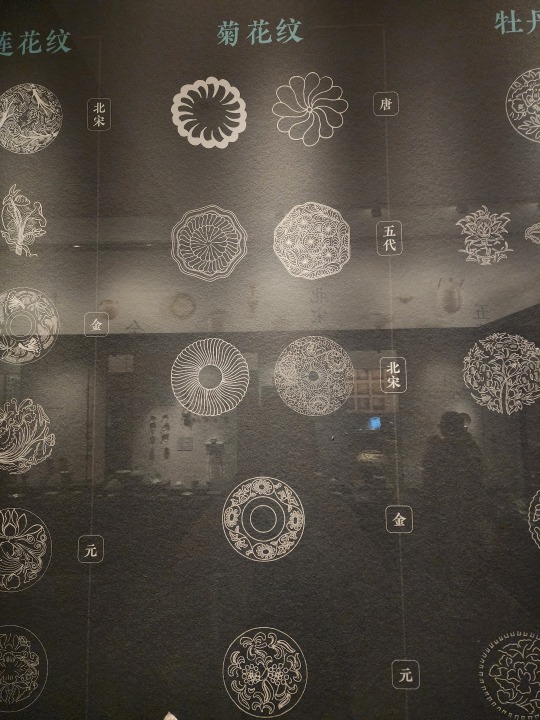
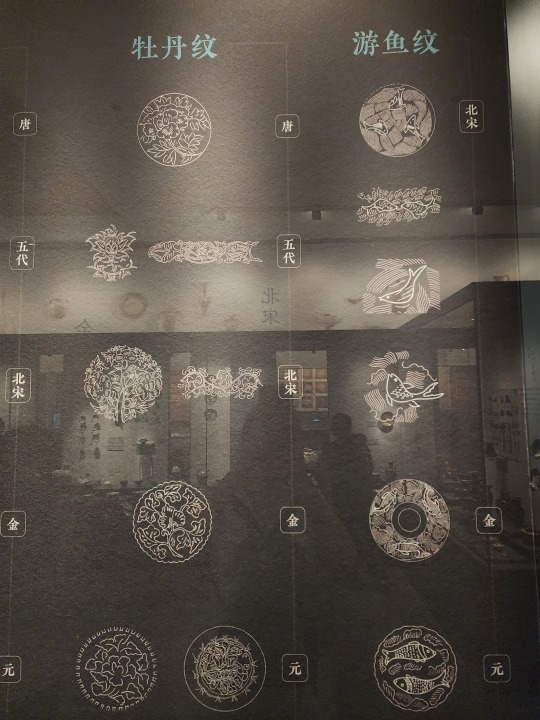
This is another one of my personal favorites, a Ming dynasty (1368 - 1644) bronze vessel with cloisonné enamel (called 掐丝珐琅 or jingtailan/景泰蓝 in Chinese). This type of vessel is called a gui/簋.

Song-era green-glazed porcelain from Yaozhou Kiln Site (耀州窑), so it's called yaoci/耀瓷 for short. This particular style is made by carving designs onto the piece before glazing and firing. I have attempted something similar when I took that wheelthrowing class years ago, but I failed lol
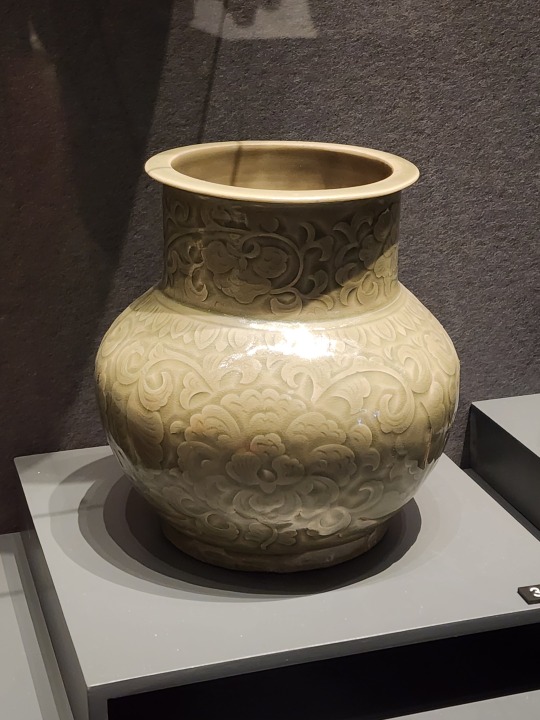
A Northern Song-era stone dui/敦 from the tomb of Lü Dalin/吕大临. The calligraphy here is in kaishu/楷书 script.

Also from the tomb of Lü Dalin, the left is a wine flagon with a dedicated holder used to warm the entire vessel along with the wine inside. The right is a incense burner with a swastika on top. Note that swastikas are very common in Chinese Buddhism, and is taken to mean "myriad" or "infinity" (the swastika is pronounced wan/萬, which literally means "ten-thousand", the figurative way of saying "infinity" in Chinese).
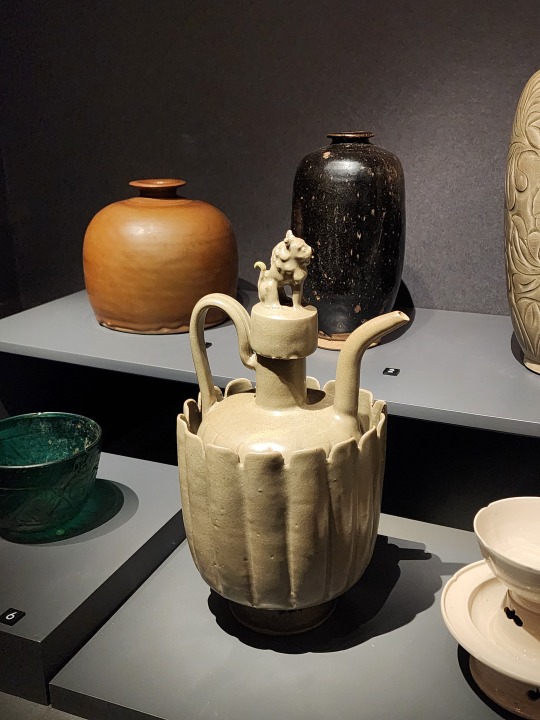
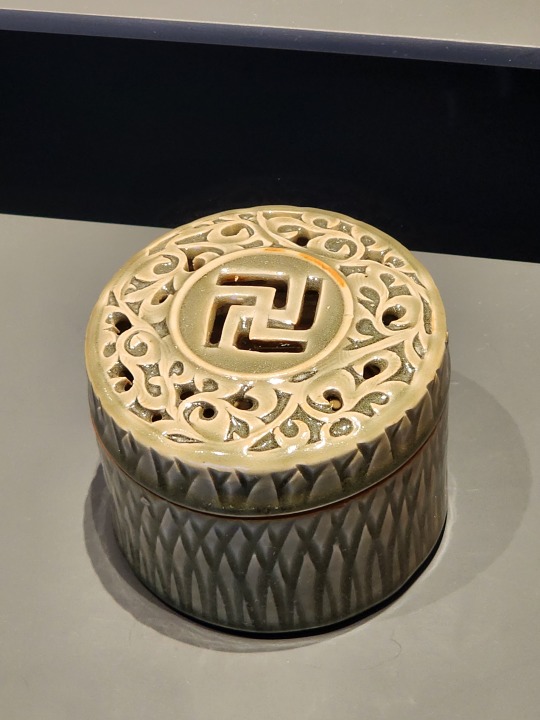
The process of making tea in Song dynasty, called diancha/点茶, which generally involves these steps: grinding the tea into a powder, sifting the tea powder, putting tea powder into a tea cup, pouring in hot water, and whisking the tea with a chaxian/茶筅 to create a light foam before drinking. In Song dynasty, the literati would hold contests among themselves to see who could make the perfect tea using the diancha method. This complex and time/effort consuming method was gradually phased out within China by the time of Ming dynasty, but deeply influenced Japanese tea making methods.
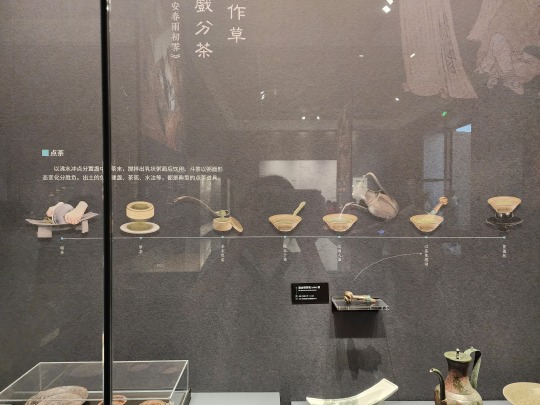
Left: a small porcelain piece depicting a mother lion and cub. The Chinese depiction of lions, called shi/狮, largely comes from a combination of the mythological suanni/狻猊, and the rare real lions that were given to China as gifts in the past. Right: a pottery dragon from Yuan dynasty, if I remembered correctly.
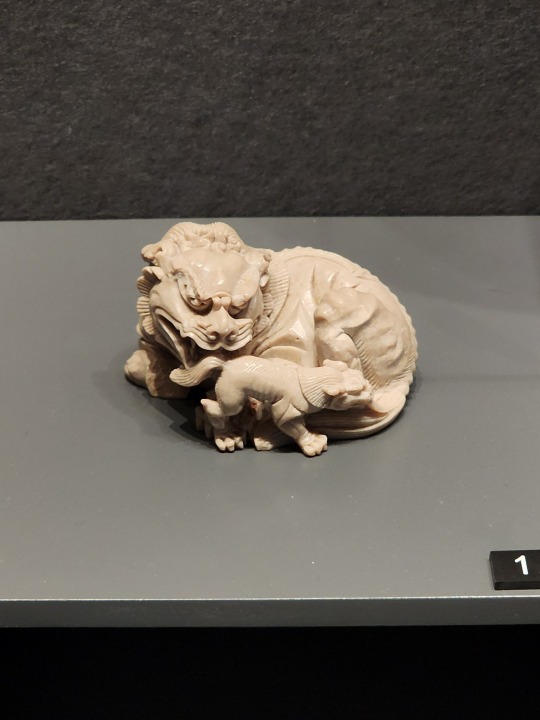
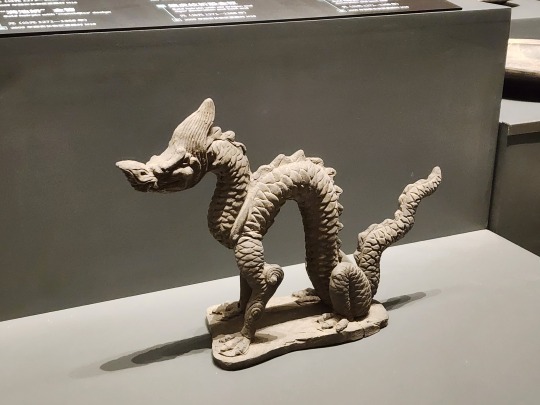
Also the previous part on Han dynasty (202 BC - 220 AD) artifacts was getting way too long, so I put these two pictures here at the end. In ancient China, many round coins had a square hole in the middle, and these holes were used to string the coins up for easier storage and counting. Such strings of coins are called minqian/缗钱, and this is why the quantifier for coins in ancient China is usually chuan/串, guan/贯, or diao/吊. In usage, chuan is not a strict quantifier, but 1 guan or diao = 1000 coins.

A modern recreation of a Han-era painted lacquer box, this red pattern on black background look is very characteristic of Han-era painted lacquerware:

Painted pottery statue of a Buddhist deva:

The painted wall murals of a Yuan dynasty tomb, viewed from below:
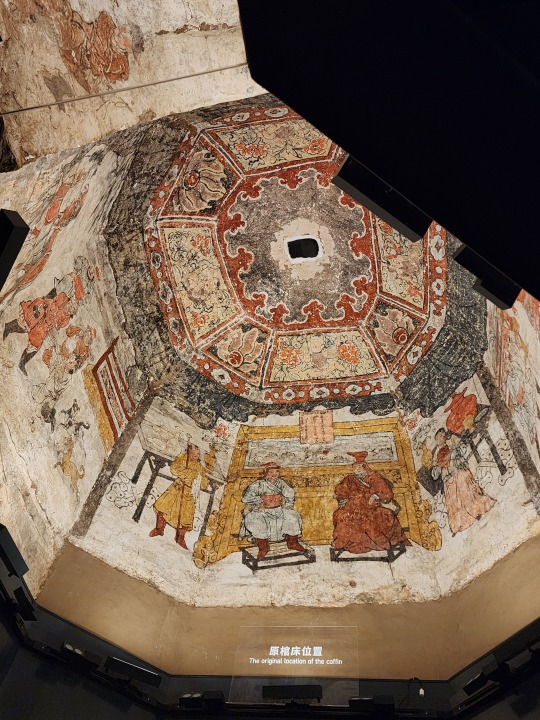
And this concludes the posts for Shaanxi Archaeology Museum! The next museum (also the last one) will be Shaanxi History Museum, specifically the new Qin-Han dynasties museum.
#2024 china#xi'an#china#shaanxi archaeology museum#chinese history#chinese culture#chinese hanfu#hanfu#chinese calligraphy#tang dynasty#song dynasty#jin dynasty#yuan dynasty#ming dynasty#embroidery#calligraphy#history#culture#archaeology
155 notes
·
View notes
Text
Fanbinding: Prajna Paramita by @catalpa-waltz

"What do you know of the Jedi?" she asks him.
"Nothing," he says. And it's true. All at once his mind is full of nothing, of an empty sky and empty sand, and on the horizon, the dark hulking shape of an empty house crouched like a sleeping beast.
"Nothing," he says again.




This bind has been sitting on my backburner for so long bc of other deadlines but it's one of those fics that drove me a little insane. @catalpa-waltz by their own words wrote in this fic a "thesis on the intersection of Mahayana Buddhism with Jedi and Mandalorian culture" and it is absolutely lovely. How could I not lean in equally hard? So we have here a number of motifs - a mandala I designed using architectural embellishments from jedi temple imagery, a lotus flower, the wheel of dharma, a geometric divider that looks like it has a bes'karta in it.





The lovely golden flower bookcloth I sourced locally here in Japan, and it is SO SILKLY SOFT I could never make a mark on it, so I did a printed obi-band instead. This paper is quite interesting - it's also a Japanese style, and I believe it's done by heavily polishing little spirals or flowers into the paper. The endpapers are a lovely geometric chiyogami, and I sewed the endbands in Japanese hand-sewing silk thread.
#fanbinding#celestial sphere press#star wars#prajna paramita#obi-wan kenobi#din djarin#the mandalorian#obi-wan/din#star wars fanfiction#ficbinding#jedi theology
168 notes
·
View notes
Photo

A Brief History of Egyptian Art
Art is an essential aspect of any civilization. Once the basic human needs have been taken care of such as food, shelter, some form of community law, and a religious belief, cultures begin producing artwork, and often all of these developments occur more or less simultaneously. This process began in the Predynastic Period in Egypt (c. 6000 - c. 3150 BCE) through images of animals, human beings, and supernatural figures inscribed on rock walls. These early images were crude in comparison to later developments but still express an important value of Egyptian cultural consciousness: balance.
Egyptian society was based on the concept of harmony known as ma'at which had come into being at the dawn of creation and sustained the universe. All Egyptian art is based on perfect balance because it reflects the ideal world of the gods. The same way these gods provided all good gifts for humanity, so the artwork was imagined and created to provide a use. Egyptian art was always first and foremost functional. No matter how beautifully a statue may have been crafted, its purpose was to serve as a home for a spirit or a god. An amulet would have been designed to be attractive but aesthetic beauty was not the driving force in its creation, protection was. Tomb paintings, temple tableaus, home and palace gardens all were created so that their form suited an important function and, in many cases, this function was a reminder of the eternal nature of life and the value of personal and communal stability.
Early Dynastic Period Art
The value of balance, expressed as symmetry, infused Egyptian art from the earliest times. The rock art from the Predynastic Period establishes this value which is fully developed and realized in the Early Dynastic Period of Egypt (c. 3150 - c. 2613 BCE). Art from this period reaches its height in the work known as The Narmer Palette (c. 3200-3000 BCE) which was created to celebrate the unity of Upper and Lower Egypt under King Narmer (c. 3150 BCE). Through a series of engravings on a siltstone slab, shaped as a chevron shield, the story is told of the great king's victory over his enemies and how the gods encouraged and approved his actions. Although some of the images of the palette are difficult to interpret, the story of unification and the celebration of the king is quite clear.
On the front, Narmer is associated with the divine strength of the bull (possibly the Apis Bull) and is seen wearing the crown of Upper and Lower Egypt in a triumphal procession. Below him, two men wrestle with entwined beasts which are often interpreted as representing Upper and Lower Egypt (though this view is contested and there seems no justification for it). The reverse side shows the king's victory over his enemies while the gods look on approvingly. All these scenes are carved in low-raised relief with incredible skill.
This technique would be used quite effectively toward the end of the Early Dynastic Period by the architect Imhotep (c. 2667-2600 BCE) in designing the pyramid complex of King Djoser (c. 2670 BCE). Images of lotus flowers, papyrus plants, and the djed symbol are intricately worked into the architecture of the buildings in both high and low relief. By this time the sculptors had also mastered the art of working in stone to created three-dimensional life-sized statues. The statue of Djoser is among the greatest works of art from this period.
Continue reading...
120 notes
·
View notes
Text
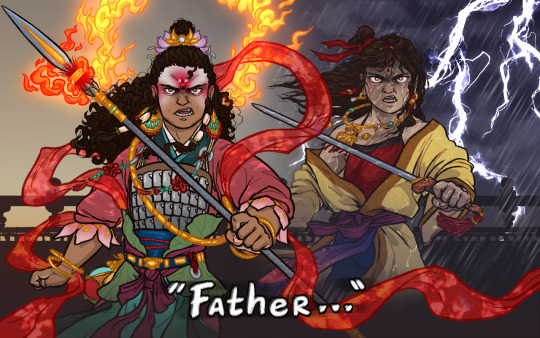
Prodigal son terror
Li Jing in a fury grabbed his halberd, leapt on his horse and galloped out of the headquarters. He was astonished to see Nezha with his Wind-Fire Wheels and Fire-Tipped Spear. He swore loudly, "You damned beast! You caused us endless suffering before your death, and now that you've been reborn, you're troubling us again!"
"Li Jing! I've returned my flesh and bones to you, and there's no longer any relation between us. Why did you smash my golden idol with your whip and burn down my temple? Today I must take my revenge!"
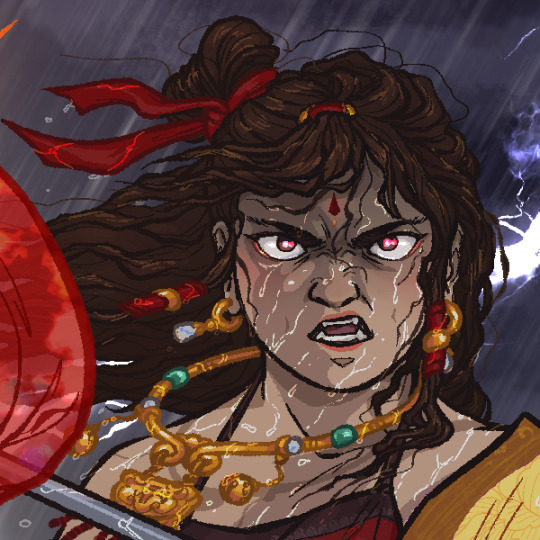

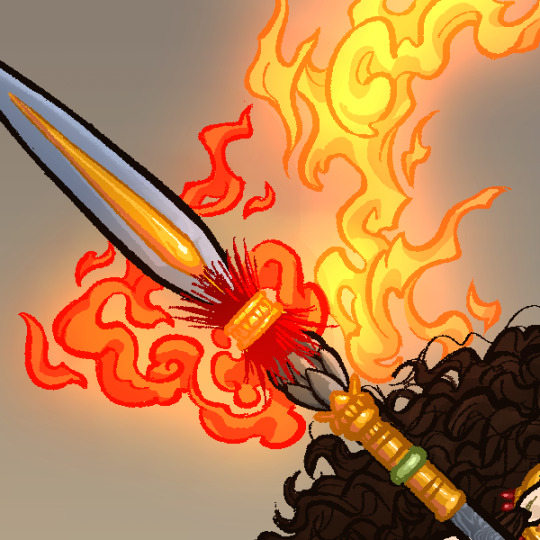

since I'm on a Nezha streak, might as well do my design for him on the Expedition AU! given that i've chosen to give characters a closer likeness to their region, it's only fitting i do the same with import deities like Guanyin, Subodhi and Nezha.
he's a complicated figure to place in the timeline because he gained popularity as a deity much after, only really arriving in China by the time the Journey would have been set. FSYY was written closer to when JTTW was written down, and he was retroactively inserted on the Zhou Dynasty period.
so deciding what to even do with him is dicey. but then i said fuck it, mythological rules apply here, he was around for the events of FSYY, and it and JTTW are set in the same universe. and for the sake of having some fun, i decided to get funky with his concept.
Nezha had the likeness of his family when he was alive, as described in FSYY, but once he was reborn with a lotus body he gained Indian traits instead. this is to be a nod to his status as an import deity and his origin as Nalakubara, and as the centuries roll by he may present himself to mortals closer to the locals' appearance wise.
as for his looks, i drew inspiration from multiple sources. read more for my rambles <3
his armor is closer to reconstructions of Zhou dynasty-period armor, skipping over extra parts simply because his lotus body is so indestructible, there's no need for a full set;
there are two red Chinese knots with jade beads dangling from the armor ties. they are said to ward off evil spirits, which felt like a good fit for a guy known to banish demons. i picked a six-petal flower pattern, which represents reunion, unity and a bright future;
i included lotus petals and leaves on his outfit as they are common in Beijing Opera outfits for him, and his makeup is a call to it as well;
The pink from the cheeks and eyeshadow seeps into his ear shell, as to convey the way sometimes, you get so angry even your ears blush;
Another thing i referenced from Opera is the two red ribbons on his sidelocks, though I changed them to two bulbs of lotus roots;
Four petals drawn close to his urna as both to make it look like a lotus but also form five petals, which is an auspicious number;
His hair crown is a fancy princely [knot] with a lotus motif and a pearl in the center, as he was the Pearl Spirit before becoming Nezha;
I was going to go with elf-like ears but I thought I could do better, so I went for stretched earlobes instead. you can't see it that well but hopefully the very large golden earrings imply it well enough xvx;
His cheek dimples are common sight on religious images of him and it was a cute touch imo;
Younger Nezha wears a golden robe because of his title as General of the Central Altar in Daoist belief, and the center direction is connected to yellow or gold, and yellow robes are usually meant for emperors and their sons, which is a minor nod to his self-assureness and boldness;
The Cosmic Ring has spiralling grooves on it both to catch blades on it for defense but also as a callback to Opera props;
On his waist is the embroidered ball weapon he was attributed with in earlier myths, he was also meant to have the leopard skin bag Taiyi Zhenren gave him, bjt it was going to be obscured by the text so i omitted it;
A few depictions of him gave him a halo of fire, which was real cool so i added it as well.
#fengshen yanyi#investiture of the gods#fsyy#iotg#li nezha#nezha#third lotus prince#third prince nezha#expedition to the west au#bell dragon art
386 notes
·
View notes
Text
Air Temple Island, the Water Tribes & the Real Life Influences that bring them together
I was gonna screenshot a post I saw and add it to my post but I don’t feel like giving that individual attention (and the 300+ notes they got), so I just decided to make my own standalone post debunking this narrative that air temple island is this fully air nomad brothel (yes they said this) with ZERO water tribe motifs which katara is forced to live in until aang passed away.
frankly it just reminded me of how little people in this fandom actually bother to analyze the actual content, instead preferring to write entirely made up scenarios of katara being reduced to an air nomad incubator along with dozens other female acolytes (yes they also said this lmao. also them acting like both male AND female acolytes weren’t living on the whole other side of the island 😭)
when in truth, i’ve come to find a lot of elements of both water tribes as well as traditional inuit elements across air temple island:
1. the paifang
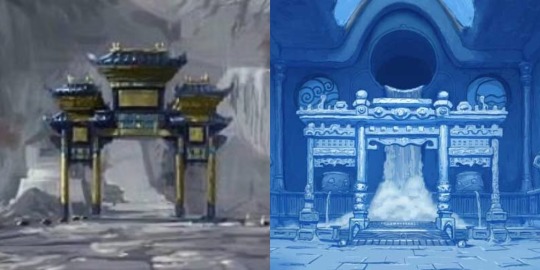
a traditionally chinese element that for some reason is exclusively found in the northern water tribe (why do they have a gate inside a throne room, you ask? ask the white people that made this show). the one on the left is actually one of two aang BUILT, at the main entrance and another at the temple entrance. this is just one example of water tribe design on the island.
2. the bagua mosaic

another structure is the bagua mosaic on the training grounds. bagua is a set of traditional chinese symbols of the cosmology, taoism. the bagua composes of 8 sets of broken or unbroken lines that represent yin and yang. where have we seen yin and yang in the original series? oh yeah, as tui and la of the water tribe! (because atla is a mess of asiatic and indigenous motifs joined together and spread out across each nation, mainly traditionally chinese elements at that.) aang building this right next to the air nomad training grounds is a symbol of the dual bending heritage their children will have.
3. gold and blue accents

now, gold and blue are the main colors of the exterior structures but is also very strong inside the air temple itself. note, the massive air nomad symbol designed fully in blue in the center and the blue banners and rugs throughout the temple. this is no doubt, for me, a visual depiction of both katara and aang’s representative cultures, but of course this is not limited to color only.
4. cloud carvings
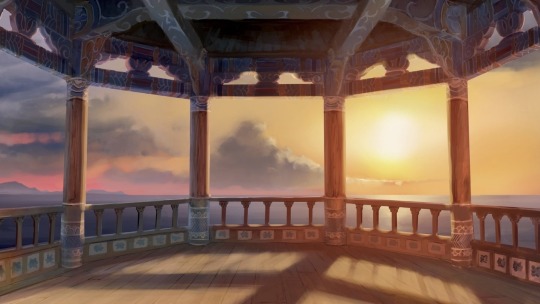
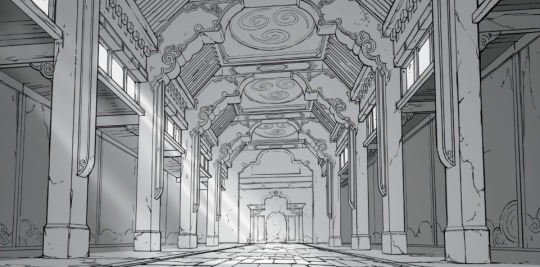
now, this is a slight detour since clouds aren’t a significant part of either of their individual cultures (that we know) but i love the kataang monopoly they have on clouds as a couple so i’m talking about it. if you look at these images very closely what do you see? CLOUD CARVINGS!! specifically near the ceiling of the pavilion (left) and the arches and walls of the temple (right) just imagining aang painting and etching these very consistent swirls, like he’ll never be the selfish inconsiderate unromantic loser you people want him to be, but let’s get more into the southern water tribe style interior.
5. interior design

so here is a southern water tribe white lotus outpost vs the air temple island main dining room. first thing, the seat cushions and rug! while we don’t see air nomad eating quarters we do get to see enough SWT customs both in atla and lok, to know this is how they traditionally eat compared to the north (limiting myself on pics cuz mobile).
another thing is the dining table itself. both have what i believe to be built in fire pits (i couldn’t actually tell for the air temple island one cuz of the quality but if you zoom in you can see the lines go in the table plus the hanging kettle on it makes it obvious to me idk). the southern water tribe one however is clear and likely a more traditional version of what aang and katara have.
thirdly, the exposed timber on the ceiling. i actually looked it up and found this is a common element of these two inuit structures: left is an aasiaat peat house and right is an igloolik turf house. all this for me to believe not only did aang build air temple island to be a haven for the TWO of them but also that katara herself had a lot of input on the interior than people care to notice lol.
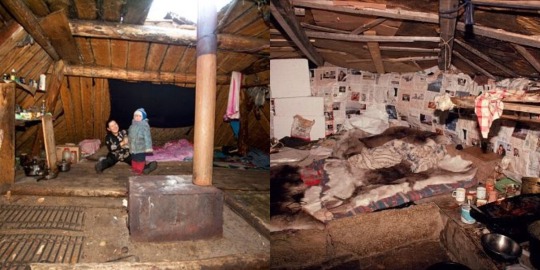
maybe instead of projecting these loser fantasies of katara being some unwilling air nomad baby making machine so you can feel better about your fantasies of katara living in a red palace with people that tried to wipe her out for a whole century, you all can go study the actual canon you were shown and the real life cultures the franchise takes from.
6. lastly, some of my own headcanons/stuff i want to see in the movie
the bathroom because I LIVE for a white marble tiled bathroom. i just know katara has to have a HUGE tub and they have one of those insane glass showers that can fit like 3 people, with cloud swirls everywhere because aang clearly got it like that
the KITCHEN, i imagine it being timber like the dining room and is probably on the other side behind the built-in shelf (get into the details like hello). in a perfect world, it would be open plan but hey
the bedroom, now we saw it in lok a bit but i wanna see it in the gaang movie too. i’m on pic limit but there’s a lot of artwork and flowers throughout the whole house which i give katara credit for because I can. like the desk, the bookshelf, that fancy looking vase thing? these two clearly have taste like don’t talk to me rn
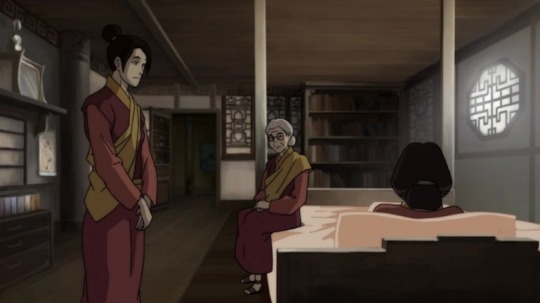
I also didn’t show the rooms and aang’s study but there’s a lot of blue decor in those places which makes me think katara decorated the whole house, even the acolytes’ hall has blue sitting cushions and columns which i think is such a nice detail.

if you guys have any air temple island headcanons of your own please reply with some i’m feening lol
big shoutout to this user:
atla-annotated (their page is so great and filled with a lot of incredible information if you guys like this sort of stuff)
#atla#kataang#anti anti kataang#anti anti aang#aang the builder#i’ll keep saying it#anti anti katara#anti zutara#enough of with these loser fantasies#i’m sorry kataang will never have that cold sad narrative y’all desperately want them to#they need their own architectural digest house tour at this point#katara interior decorator fic when??#i need the hgtv kataang fic too btw#my fic ideas#my headcanons#air temple island#lok#cloudfamily#water tribe#air temple
237 notes
·
View notes
Text


Propaganda
Grace Kelly (Rear Window, High Society, Dial M for Murder)—The literal princess of Hollywood (she retired at 26 to become princess of Monaco), her name said everything about why she was so hot. She carried herself with a grace and elegance you just don't see anymore. Her voice was sultry without being overbearing, and she had the ability to be sweet but suggest a deep sensuality at all times.
Hu Die (Sing-Song Girl Red Peony, The Burning of the Red Lotus Temple)—i haven't seen any of her movies but apparently she was China's first "movie queen" in 1933? she was also in the the first Chinese sound movie!
This is round 3 of the tournament. All other polls in this bracket can be found here. Please reblog with further support of your beloved hot sexy vintage woman.
[additional propaganda submitted under the cut.]
Grace Kelly:
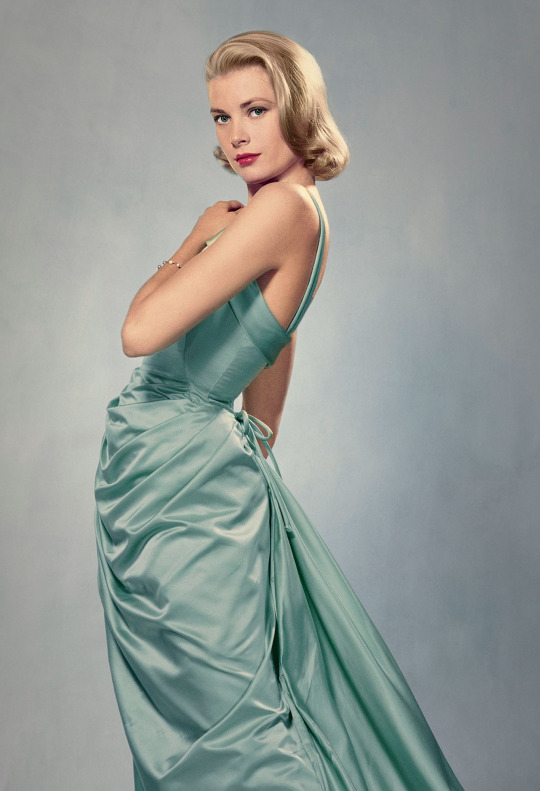
flawlessly beautiful and a literal princess
Her facial structure? Flawless. Her eyes? Stunning. Her hair? Gorgeous. Her style? Immaculate. Every second she’s on screen, she just exudes this elegance and sophistication. It’s no wonder she ended up marrying a prince. But she’s got this mischief in her eyes that is compelling.

She was so elegant, so beautiful and perfect I could cry for real. A fairy disguised as a woman.
the most beautiful of Hitchcock's "icy blondes". elegant, glamorous, she left hollywood to became an actual princess, I mean, COME ON
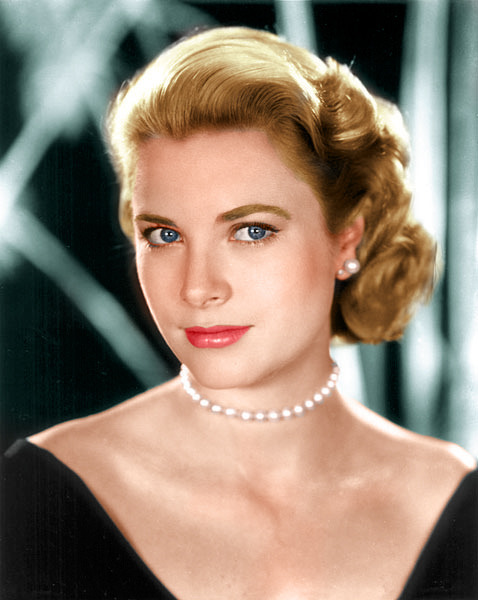
she's so pretty and refined and elegant! I'm pretty sure taylor swift's blonde hair red lip look is modeled partly after her
She's just so elegant, look at her all dressed up like a Barbie doll in the latest fashions. There's a quiet dignity about her.

Not only was she princess of Monaco she also is Stéphanie de Monaco's mother and yeah, vote for her she's soooo pretty That red dress in Dial M.... hot damn
To me, she is the first and only blonde. She earned it. Paired with Edith Head's costume design she is unstoppable. I dare anyone to watch her as Lisa Carol Fremont in Rear Window and not be completely blown away by her hotness.
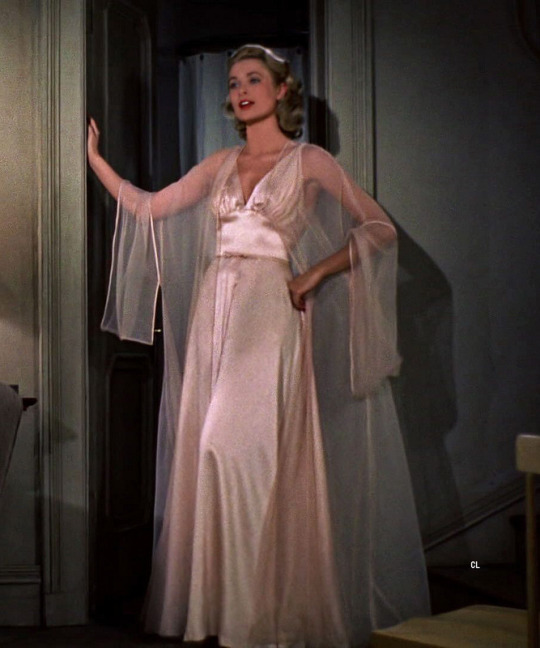

SHE IS SO PRETTY AND FASHIONABLE!! Not only that but she has an alluring aura to her in whatever film I've seen her in! Rear Window is just one of my personal favorite films she was in, especially for her costumes in that. And how many actresses can you say was a princess consort in addition to being a famous leading lady?
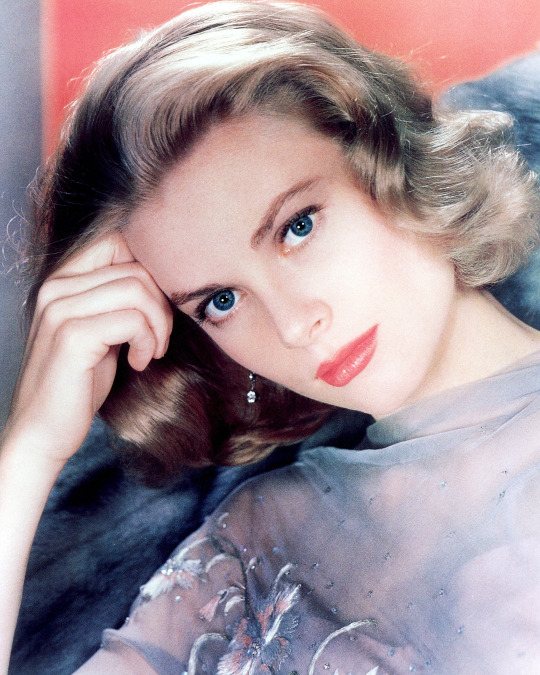
Hu Die:

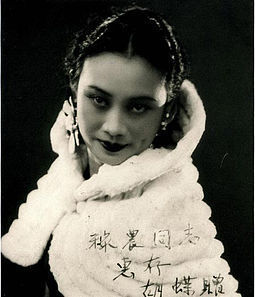

98 notes
·
View notes
Text
Douma & s/o practicing Tessenjutsu - headcanons
Requested by: @grossograsso ♥
MASTERLIST
Douma, being skilled in combat and knowledgeable about various forms of martial arts, takes a keen interest in your desire to learn tessenjutsu, the art of fighting with a tessen (iron fan). He sees it as an opportunity to bond further and share a common interest
Douma's approach to training you is patient and supportive. He understands the importance of starting from the basics and gradually progressing. He helps you master the fundamental techniques, offering guidance and gentle corrections along the way. "Now, focus on your footwork. Keep your stance stable, and remember to pivot your hips for more power. Ready? Begin!"
There are times when you become frustrated with a difficult technique, feeling like you're not making any progress. Sensing your discouragement, Douma surprises you with a small gift — a beautifully designed tessen that he personally crafted. It serves as a reminder of his belief in your abilities and reignites your determination to improve
As you train together, Douma's eyes sparkle with admiration as he witnesses your growth and dedication. He encourages you, praising your progress and helping you refine your skills. Your training sessions become moments of shared passion and connection. "Impressive! Your movements are becoming more natural. Keep refining your technique, and soon you'll be a master of tessenjutsu!"
Despite your best efforts, accidents happen, and sometimes wounds are inevitable. When you accidentally cut yourself with the tessen, Douma's concern immediately takes over. He swiftly tends to you, gently cleaning and bandaging the wound with utmost care, his touch both gentle and reassuring. "Ah, Y/N, you need to be more focused, my little lotus. We don't want you to bleed out, yeah?"
To add a touch of humor to your training, Douma challenges you to a friendly tessenjutsu duel. Despite his formidable skills, he purposely hams up his defeat, pretending to be dramatically defeated by your swift strikes and exaggeratedly collapsing to the ground. You can't help but burst into laughter, momentarily forgetting the seriousness of your practice
In the serene setting of the garden within his temple, Douma and you train on the bridges that stretch above the large pond. The peaceful atmosphere, with vibrant koi carps swimming gracefully beneath them and lotus flowers adorning the water's surface, creates a peaceful backdrop for your practice
Beyond the physical aspect, Douma also helps you strengthen your mental resilience. He encourages you when you feel discouraged, reminding you of your progress and highlighting your strengths. His unwavering belief in your abilities serves as a powerful motivation
Douma's presence provides a sense of security during your training sessions. His watchful eyes never stray too far from you, ready to offer guidance or protection if needed. He creates an environment where you feel safe to explore your skills and push your limits
Training sessions often become moments of shared laughter and lightheartedness. Douma infuses your practice with playful banter and witty remarks, creating an atmosphere that fosters enjoyment and camaraderie
In this dynamic of trust, growth, and shared passion, Douma and you discover not only the art of tessenjutsu but also the depths of your love for each other, blossoming amidst the beauty of the garden they call your own. "I can't help but feel an immense sense of pride watching your development, seeing how far you've come. Your dedication and determination have truly paid off. Your strikes are precise, your footwork has improved significantly, and your overall control of the tessen is impressive. You've become a force to be reckoned with."
#douma headcanons#douma#kny douma#kimetsu no yaiba douma#kny headcanons#demon slayer headcanons#kimetsu douma#kimetsu no yaiba#demon slayer#lord douma#demon slayer kimetsu no yaiba#upper moon two#headcanon#tessenjutsu
300 notes
·
View notes
Text
Wangxian, Jiang Cheng, The Ancestral Hall, and who was really dishonorable during that confrontation
Some terms and accepted commonalities of traditional early ancestral worship, that is not to be confused with what is seen in smaller tighter family homes with less of the previous community focus:
祠堂 Ancestral Hall or 家廟 Family Temple (used less often as the basis of the temple is to promote strong lineage worship and filial piety of past generations that helped to grow a strong long line and respecting what had come before)
A building where members of a particular clan gather to honor their ancestors. An ancestral temple can serve clan members of a village or local area who all share common ancestors or, on a larger scale, it can serve all the clan members of a longer lineage. It is usually named after a certain ancestor, such the common ancestor of the clan members who first inhabited the village or the founder of the lineage.
An ancestral temple would be open on a regular basis for those wishing to offer prayers for good health, success, etc, in the same way that temples housing the images of traditional deities would be open.
Due to how prevalent Ancestral worship is and as shown within MDZS, the heavy community based aspect of the sects are the basis of Wei Wuxian's own visit to the shrine, and traditionally, was the most respectful action to take to those that had raised him, not as an inner Jiang, but overall the clan of Yunmeng Jiang that had once been open to all disciples that wished to be a part of Yunmeng Jiang.
These halls, unlike current real life family altars, were open to all who wished to pay respects to the ancestors/clan of that province. (Lotus Pier's hall is not designated to the inner sanctum of just Jiang Cheng's estates and is for all disciples/ties to the Yunmeng Jiang Clan, however distant. Wei Wuxian despite his nebulous status within the Jiang family was still once considered formerly of Yunmeng and was his relevant filial ties and guardianship. As such, it is only respectful to confer with the dead that had such significance in his life to allow continued peace of the dead as well as reverence in asking for their blessings as he found a prospect for marriage as it was traditional for the bride (groom in this case) to be presented to those who had been considered as parents/family.
It is also unbecoming to bring negativity within the ancestral hall as it is a place to acknowledge what the living had been given and granted due to the dead's actions (karma) and to be granted a good life in return for that show of respect.
As such, Jiang Cheng himself does not make mention the good the Jiangs had done, only focusing on how the living are causing him problems, disrespecting the rest that the dead spirituality have been blessed with and no actual respect upon their lives as he hyperfocuses on the death and it's impact upon him. Wangxian in the traditional wuxia setting and tropes fit tightly as well worshipping visitors, the heroes of these novels always display upright morality of filial piety and Confucian ideals of the practice.
Jiang Cheng, ironically despite his speeches of his family and besmirching of their honor, is the one to do just that as he goads Wei Wuxian into the personal strife that the Jiangs have no longer been apart of for years and represents another bad omen of his granted title.
345 notes
·
View notes
Text



This is just for practice, study and fun! I hate this arrogant, immature and disrespectful mentality of "i fixed it" "mine is better" etc and i don't want to be associated with them.
Calamity trio re-imagined! (edit video link) notes in read more
- I made the colors more saturated to match my art style
- Designs inspired by Valeriana's phrase: "Think of your memories of Amphibia, of how much this world means to you. This will allow the stones to resonate with your hearts... once again!"
Anne

- Lotus hair and frog eyes as in the concept art
- Lotus flower headband
- Heart-shaped gems as the blue gemstone represents heart
- Shoulder pad inspired by the Plantar's house and the blue mushrooms that are very distinctive in this region
- I made the boots more similar to the dragonfly costume's boots
- Vines on gloves and boots as they are a natural and common element in the region where Anne lived
- The boot leaf is the same as Leif's, the first Plantar
Sasha

- As Sasha herself said, "I am not that person anymore!", so I was heavily inspired by the new Sasha's outfit from the third season
- But I still decided to leave some elements of the official design on the arm, inspired by the design of the battle of the bands and her design of the second season, as they were important moments for her
- Now the heron circlet is bigger and has a scar on their eye, matching Sasha and Grime
- A cool eye patch with the eye symbol
- Toad eye!
Marcy

- Changes the hue to another shade of green
- I gave the same hairstyle as the battle of the bands outfit and kept the green barrette
- Newt eyes!
- Now the tiara has the shape of corals and a gem like the brain-like mushrooms (from the first temple) in the middle, as the green gemstone represents wit
- All armor is inspired from General Yunan and King Andrias' armor
- Shells throughout the design as they are very distinctive in this region
- Her skirt is a mix of my redesign with the design of the band battle outfit, and with the wave print like Lady Olivia's dress
#my edit#amphibia#anne boonchuy#sasha waybright#marcy wu#calamity trio#re-imagined#character redesign#character design
38 notes
·
View notes
Text
Queer Fantasy Books Bracket: Round 1


Book summaries below:
Crier's War duology (Crier's War, Iron Heart) by Nina Varela
Impossible love between two girls —one human, one Made.
A love that could birth a revolution.
After the War of Kinds ravaged the kingdom of Rabu, the Automae, Designed to be the playthings of royals, took over the estates of their owners and bent the human race to their will.
Now, Ayla, a human servant rising the ranks at the House of the Sovereign, dreams of avenging the death of her family… by killing the Sovereign’s daughter, Lady Crier. Crier, who was Made to be beautiful, to be flawless. And to take over the work of her father.
Crier had been preparing to do just that—to inherit her father’s rule over the land. But that was before she was betrothed to Scyre Kinok, who seems to have a thousand secrets. That was before she discovered her father isn’t as benevolent as she thought. That was before she met Ayla.
Set in a richly-imagined fantasy world, Nina Varela’s debut novel is a sweepingly romantic tale of love, loss and revenge, that challenges what it really means to be human.
Fantasy, epic fantasy, science fiction, young adult, secondary world, romance
The Burning Kingdoms series (The Jasmine Throne, The Oleander Sword, The Lotus Empire) by Tasha Suri
Author of Empire of Sand and Realm of Ash Tasha Suri's The Jasmine Throne, beginning a new trilogy set in a world inspired by the history and epics of India, in which a captive princess and a maidservant in possession of forbidden magic become unlikely allies on a dark journey to save their empire from the princess's traitor brother.
Imprisoned by her dictator brother, Malini spends her days in isolation in the Hirana: an ancient temple that was once the source of the powerful, magical deathless waters — but is now little more than a decaying ruin.
Priya is a maidservant, one among several who make the treacherous journey to the top of the Hirana every night to clean Malini’s chambers. She is happy to be an anonymous drudge, so long as it keeps anyone from guessing the dangerous secret she hides.
But when Malini accidentally bears witness to Priya’s true nature, their destinies become irrevocably tangled. One is a vengeful princess seeking to depose her brother from his throne. The other is a priestess seeking to find her family. Together, they will change the fate of an empire.
Fantasy, epic fantasy, politics, romance, adult, secondary world, series
#polls#queer fantasy#crier's war#nina varela#iron heart#the burning kingdoms#tasha suri#the jasmine throne#the oleander sword#the lotus empire#tbk#crier#crier x alya#books#fantasy#booklr#lgbtqia#tumblr polls#bookblr#book#fantasy books#lgbt books#queer books#poll#book polls#queer lit#queer literature#gay books
16 notes
·
View notes
Text
How the Zonai connect the The Legend of Zelda franchise (Theory)
In TotK we're explained that the kingdom of Hyrule was founded thanks to the union of the Hylian and Zonai tribes with the marriage of Rauru and Sonia. I've seen that a big part of the fandom thinks that this is not the true founding of Hyrule and that it's the creation of a new kingdom (since this has already happened before), but I think that it is the same Hyrule that we see in Minish Cap, Ocarina of Time, Twillight Princess, etc.
Why do I believe this? Because the Zonai existed during Skyward Sword and became extinct before Minish Cap.
1°- The Zonai in Skyward Sword
Throughout Skyward Sword, in the surface we can see ruins, temples, dungeons, etc. I believe that most of these constructions were built by the Zonai: The Skyview Temple has mechanisms which work with eyes, the Earth Temple is full of symbolism and sculptures of dragons (and also has sculptures of people with fangs, long ears and three eyes), the Ancient Cistern has symbols of what appear to be tears and also flowers of lotus (which personally remind me of the figure that has the Zonai symbol from TotK), the Sandship has many spirals and in the Fire sanctuary there are statues of more dragons. Also, most of the dungeons I just mentioned (aside from being almost completely abandoned) have spirals in their architecture. As you can see, the Zonai probably inhabited all of Hyrule just like in BotW, since there we can see Zonai architecture throughout the entire kingdom.
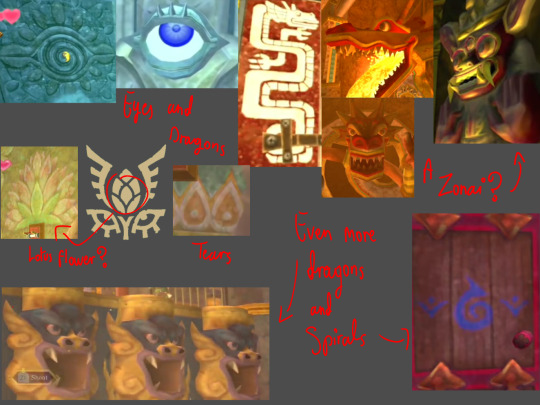
2°- The symbols
The features that the dungeons have are eyes, dragons/snakes, owls, tears, and spirals; we can easily relate all these symbols to the Zonai, because there are many of these in their ruins. Throughout the Faron region there are statues of boars, owls and dragons/snakes; These represent the golden Goddesses and their qualities: power, wisdom and courage. In TotK we can see that the eyes represent the Zonai (in weapons, architecture, jewelry and the extra eye on their foreheads). The tears can be related to the secret stones, which have the same shape as the tears, and are apparently a very important element in the Zonai culture.
And finally the spirals, the most important symbol. Before TotK, spirals were the symbol of the Zonai tribe; In BotW all Zonai architecture was full of spirals (architecture which you can find in basically all Hyrule). According to Creating a Champion, the spiral is a unique mark to show that the Zonai were there and that the place belonged to them; This is why I believe that the dungeons in Skyward Sword were built by the Zonai. (Interesting fact: as I had already pointed out in another post, the Māori patterns are traditional art from New Zealand, one of them is a spiral and is called Rauru)
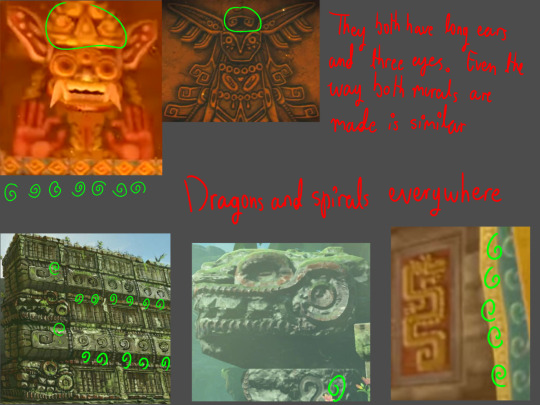
3°- The Lanayru Desert
The Zonai made buildings throughout the surface, but I believe they had one special settlement; Lanayru. Long ago I thought that the Lanayru Mining Facility belonged to the Sheikah, but now I'm almost sure it belonged to the Zonai. Here are my reasons:
The Zonai had an incredibly advanced technology for their era, in the same way, the entire Lanayru region in general has very advanced technology: artificial light, flying robots, laser rays, automatic platforms, electricity, etc.
Throughout Lanayru there are all kinds of technology and robots, if you look at their designs you will notice that they have an aesthetic very similar to the Zonai. (Another detail is that these robots work with blue/green electricity, the same color as the electricity that the Zonai Constructs have)
The ancient robots that inhabit Lanayru have many kinds, each with a different function (just like the Zonai Constructs), and it seems that most of them suddenly stopped working while doing their daily jobs. It seems that they worked for someone and then they disappeared, similar to how the Zonai became extinct.
The Lanayru Mining Facility, as its name says, is where they used to process all the Timeshift Stones that they had obtained in the mines. In TotK the Zonai also had mines where they collected Zonaite.
As I mentioned before, throughout Lanayru there is a mineral called Timeshift Stone, which has the power to change the time around it. These stones have a dark blue color, and when activated they change to light blue/green; When these pass through the Lanayru Mining Facility, a design that looks like an eye with eyelashes and a tear is added. Previously that eye would be related to the Sheikah, but with all these connections it would make more sense for it to be related to the Zonai.

4°- Origins of the Zonai
All of this points to the fact that the Zonai inhabited Lanayru and that everything there belonged to them; That means that the Zonai protected the temple of time and Nayru's flame, which leads me to think that they also protected the other two flames. As I had previously said, all the temples where the flames are have details that make them related to the Zonai. But why do the Zonai have access to these sacred artifacts?
In TotK we are told that the Zonai are descendants of Gods, and these gods were the ones who gave them the secret stones (which are also sacred artifacts). In Creating a Champion we're told that the Zonai worshiped a certain water dragon, however, in the BotW era there is no water dragon (It could be Farosh, but it's more related to electricity). But, in Skyward Sword there is a water dragon, Faron.
I believe that the Zonai are descendants of the dragons from Skyward Sword (which are basically gods). That would also explain why most temples are made for the dragons and the appearance of the Zonai and their dragon-like features too (scales, horns, fangs, bright colors, etc.)
5°- The tears
So the Zonai, being descendants of dragons, were entrusted to protect sacred artifacts such as the secret stones, the Gate of Time in Lanayru, the flames of the Goddesses, and probably also the Sacred Tears.
In Skyward Sword, when Link goes to the Silent Realm he has to find the tears of the goddesses. There are two very important things here:
After TotK we relate a lot the tears with the Zonai, and in the Silent Realm we have to collect sacred tears. Also in the Silent Realm (and only there) we will find many ''dusk relics'', which have the same shape as the secret stones.
In the Silent Realm there are machines called Guardians, which have an incredible resemblance to the Zonai (Extremely tall, with long ears, three eyes, and they also have many spirals on their desing).
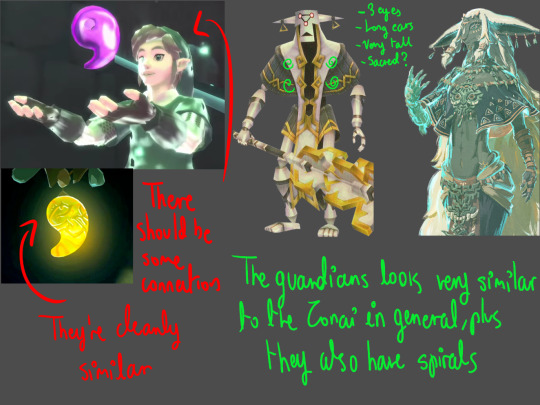
Another game where there are also tears that must be collected is Twilight Princess. Here the spirits of light ask you to collect all the tears in order to restore the world of light.
6°- Connection with the Twili
Another thing I want to point out and that a big part of the fandom has noticed is the big resemblance that the Zonai and the Twili have, but I still want to show more evidence of why I think they are connected:
The spirits of light tell us that a dark tribe known as the Interlopers tried to take over the Triforce using their magic, it was then that the spirits of light stopped them and sent them to the twilight realm.
In Twilight Princess they describe the Interlopers as a tribe with incredibly powerful magic (so much so that they almost got the Triforce). In Creating a Champion they describe the Zonai as “strong magic wielders who vanished suddenly,” similar to the story of the Twili.
The architecture of both tribes is very similar; The architecture in the Twilight realm is very similar to the Zonai which we see in the Dragon's Tears. Inside the palace of Twilight we can see that the building is full of figures that look like eyes with tears, hands, snakes and spirals.
Eyes and hands seem to be very important in Twili culture as well as in the Zonai (There are giant hands in the palace of twilight and even Wolf Link has the mark of a third eye with a tear on his forehead).
The Twili have technology similar to the Zonai's (platforms, switches, etc.)
The magic of the Twili is blue/green, a color we associate with the Zonai, and when something or someone bad controls both, they turn red. Another thing to add is that when we saw the TloZ TotK logo, many of us related the cracks of the master sword with the magic of the Twili.
In BotW, in the Faron region, there is a fragmented monument which is very similar to the twilight mirror and which also has the same color as Twili/Zonai magic.
Despite being a tribe of shadows, they have artifacts called “Sol” which are made of light.
A very important piece of evidence that the Twili and the Zonai are connected is the design of the Fused Shadow. The Fused Shadow (in addition to appearing to be made from the same material as most Zonai architecture in TotK) has spirals, snakes, and eyes.


Another detail about the Fused Shadow that has been talked about for many years is that one of its pieces seems to be one of the eyes of the Majora's mask (I also once saw that someone was comparing one of Rauru's eyes in the mural with Majora).
7°- Majora
In Majora's Mask we are explained that an ancient tribe used to wear the Majora's mask to perform rituals, then they sealed the mask in shadows to avoid catastrophes, and then they mysteriously disappeared. It has been three times that we have heard about a powerful tribe which mysteriously disappeared, it's not weird to think that they could be the same tribe, the Zonai.
The manga explain us that Majora was originally a demon. Majora's armor could fulfill wishes, so many people tried to kill him to take his armor; However, Majora ate them. Afterwards, he was defeated by the Fierce Deity, who made him dance for 3 days and 3 nights until he died. The Fierce Deity used the remains of the demon to make the Majora's mask.
It may be that these people Majora killed were the Zonai, and when the Fierce Deity killed the demon, the Zonai thanked him by making a mask in his honor. I believe this because the Barbarian Armor (which is most likely of Zonai origin), when dyed blue or red, has the same marks as the Fierce Deity.

8°- Zonai appearances in other games before BotW
I don't have much to explain here, just more evidence that the Zonai could have been in Hyrule before the BotW era.
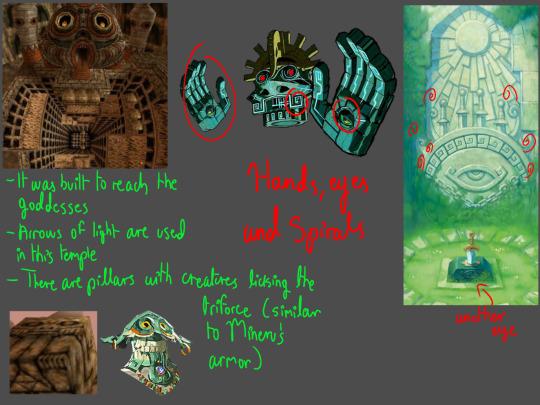
9°- History of the Zonai (my conclusion)
The Zonai are descendants of the three dragons that protected the surface in Skyward Sword. This tribe had very advanced technology and powerful magic. However, being so special, they had a small population
The Zonai had the mission of protecting the most important, sacred artifacts (the tears of the goddesses, the tears of light, and even the Triforce), which is why they came down to the surface in the distant past (The age of Creation, before SkSw). When they arrive to the surface, the Zonai took advantage of the resources that were there (the timeshift Stones) and with them created the two Gates of time and also the ocarina of time (The ocarina is a relic that has been passed down through generations in the royal family, it may have been a gift from Rauru to Sonia). However, by spending Lanayru's resources, a portion of the Zonai ended up dying along with all of Lanayru's technology.
When the Zonai descended to the surface, the Hylians and other inhabitants mistook them for Gods. The Zonai became so obsessed with the idea of being Gods that they tried to be one; So they looked for the demon Majora to kill him and take his armor, with which they could make the wish of becoming Gods, however the majority died in the attempt to defeat the demon. When the Fierce Deity managed to kill him, they made a mask of him and painted their armors in his honor, and the remaining Zonai decided to hide the Majora's mask to avoid further catastrophes. However, they did not give up trying to be gods.
When the ancient battle begin the Zonai were sent to build the Silent Realm for the Hero (that's why you have to collect tears and the guardians look so much like the Zonai). But in the middle of the war, a group of Zonai used their magic to create the Fused Shadow to enter the sacred realm (they were its protectors, that's why they knew about it) and obtain the Triforce, so they could finally make their wish. Unfortunately for them, the Goddesses found out about their betrayal and sent them to the Twilight Realm to punish them (Long time later, the other Zonai built a replica of the mirror of twilight, which is found along with the other Zonai ruins in Faron, to remember them).
At the end of the war, the goddesses gave the few remaining Zonai the secret stones, them decided to remain faithful to the Goddesses and protect the stones (It could be that, as gratitude, the spirits of light gave these few Zonai their light magic, that's why Rauru has sacred light without being related to Hylia). Throughout Skyward Sword the Zonai were hiding somewhere in the sky.
Hundreds of years after SkSw, the Zonai descended from the sky again; Rauru, who was the leader of the tribe (and was also a descendant of the Zonai who protected the stones and had the powers of light), married Sonia (who was a descendant of Link and Zelda from SkSw) and together they founded Hyrule. With the pass of time, the Zonai began to die and finally Rauru and Mineru died in the Imprisoning war, and the Zonai became completely extinct.
Alright, if you made it this far I want to thank you very much. If you have more evidence about this theory that you would like to add, or anything that contradicts it, or any comments, I would like to see it. :)

#I'll explain my theory about the ancient hero in another post#maybe#Zelda#the legend of zelda#tloz#majoras mask#tears of the kingdom#tloz totk#skyward sword#tloz sksw#twilight princess#loz tp#Zonai#Twili#Majora#fierce deity#golden goddess#Rauru#King Rauru#nintendo#mine
54 notes
·
View notes
Note
what is nawa based off of?
You just invited me to yap.
... And I love yapping.
Tara, Guanyin, and Janguli (first variety, multiple sources state that she is an emanation of either Tara or Guanyin).
Her soul was formed out of Guanyin's tears as the original Manawari died in the womb, hence the theme of purple (which is actually blue), but utpalas (blue lotuses) looked purple to me, so I figured to just use purple for her design.
Her themes are based around the water-moon motifs around her (the link I attached her refers to them as a 'he'. Guanyin has been been stated to have multiple forms, so...).
Allegedly, Tara's statue was found in Agusan del Sur, Mindanao, and her origins state that she was born when Guanyin shed a tear which fell into the ground and formed a lake, where Tara emerged from the lotus that rose from the waters (Britannica, 2011).
Additionally, I intentionally gave her a close brother-sister relationship dynamic with Red Son as a mirror to Guanyin and Shancai (Red Son's Buddhist name).
I may have to consult Abbess about this, rhrhrhhhrh, I haven't gone to the temple in so long but I will inquire her about the correctness of the information, so take this with a grain of salt
But Haliya/Mayari and Bakunawa come to mind, and I made them lower devas that are more interested in the world and have no knowledge of beings higher than them (Wikipedia, n.d.). She's descendants of them, but only exists to fulfill their wishes.
Since syncretization happens, some of Philippine myths and languages are influenced by Buddhism. Bakunawas are equated as Naga due to syncretization (Wikipedia, Cabrera, JR., and The Aswang Project, 2019 and 2012).
References that were not underlined:
Britannica (2011). Guanyin. Retrieved from: https://www.britannica.com/topic/Guanyin-1694188
Wikipedia, Cabrera, JR., and The Aswang Project (2012 and 2019). Bakunawa. Retrieved from: https://en.m.wikipedia.org/wiki/Bakunawa
Wikipedia (n.d.). Deva (Buddhism). Retrieved from: https://en.m.wikipedia.org/wiki/Deva_(Buddhism)
27 notes
·
View notes
Text

Welcome to the moth cave, home of the moth man and many others. This post shall be an introduction ish thing for new people and for people who need a refresher (please note I’ll be adding more to this post as time goes on and I reveal more about my au and introduce new characters)
Things to know about the moth man
Sona design reference
I am a nonbinary trans man (pronouns are they/him) who loves to draw and interact with people
Please read the messaging rules before sending me a message. I don’t want an anxiety attack to happen  
Do I do drawing requests? Yes kind of, I might sketch some requests when I get bored
Can I draw the moth man’s characters? Yes just credit and ping me and don’t draw them in inappropriate ways
Can I have 1 of the moth man’s character’s show up in an au? Depends how much I know you. If you’re a person I talk to a lot then you can ask me. If I don’t know you then don’t ask me
Main au OC’s
Yu ling ren
- Yu ling’s battle suit
- Little Yu ling
- Yu ling’s weapons
- Voice claim
Yu ling is a survivor with no purpose, no more destiny. Just a girl who wants to do what’s right for the world but can hardly interfere without going against her 1 very meaning (Information might get redone in the future)
Diedie (the dandelion child)
- diedie’s parents
- diedie’s bird
Diedie is a child from 1920s china who was in the right place at the right time. She became the guardian of an ancient artifact named the lotus reliquary after stopping a demon from destroying it. Diedie seems to have gained the liking of the village elders especially the village’s crazy lady, someone who always seems to know what diedie wants to say but can’t
Bendy
Bendy is the ink demon living in yu ling’s hand fan and helps protect Yu ling when needed. They are a lot smarter and more emotional than the ink demon in the scroll and they like to mimic people to figure out how to behave. They don’t get a lot of situations but they’re trying to understand them 
Other characters
The lady/crazy lady
The lady is an armless old woman who up keeps the temple of the East Sea and helps teach diedie. She is known as the crazy lady by the villagers for showing up out of nowhere and her strange ways and behavior. diedie picked up on her weird way of speaking about certain myths, talking about grand journeys and giant snakes made only from 2 throwing silver around like it was all real, diedie was young but she was smart, even if those myths were true they’re old to old for anyone in those myths to still be alive today
The assistant
- Off work Outfit
The assistant is a strange being, her kind and innocent exterior almost seems to be a façade to hide something but what? The only things people know for sure about her is her name and her willingness to sacrifice things for the greater good
Spirit dragon (place holder name)
The spirit dragon is a scrappy, quiet and shy spirit. The spirit dragon is sensitive to heat and it always feels like they’re eating a very hot pepper, due to this they tries to stay in cold or wet environments, they always have things to say but is always to shy to say them
The mystery maiden
#lunar creations#my sona#oc; yu ling#oc; dandelion child#oc; mystery maiden#oc; the assistant#oc; tiny dragon#lirian#lmk#monkey kid#lmk ocs#lmk au?#gacha life 2
37 notes
·
View notes
Text
Cultural Annotations on New Gods: Yang Jian -Part 1-
This is the companion piece to my long-ass thread about the same topic on twitter.
Light Chaser really outdid themselves with the visuals and research this time, and with Yang Jian out in NA theaters, it's totally worth seeing on the big screen.
There were so many historical references packed into this movie, I thought I'd do a deep dive into the characters, motifs and lore associated with Investiture of the Gods scene by scene.

Background
Yang Jian is the second instalment of the New Gods series of animated films (after Nezha Reborn), that are loosely based on the 16th-century Chinese novel Investiture of the Gods (IOTG). IOTG shares some canon with other Chinese classics like Journey to the West, Classic of Mountains and Seas, Lotus Lantern etc. so there may be crossovers.
The character Yang Jian, better known as the god Erlang, is a figure widely regarded as heaven's greatest warrior deity. He is recognized for having a third truth-seeing eye, and in IOTG, helped bring about the fall of the Shang Dynasty in 1046 BC.
The movie however, takes place during the Wei, Jin and Northern and Southern dynasties circa 5th century AD, some 1500 years after events of IOTG. We first meet Yang Jian as a rather lethargic but free-spirited individual, 12 years after losing his powers during a great disaster involving the three realms, scraping by as a bounty hunter.
A rough timeline
c. 1075-1066 BC: Yang Jian is born
c. 1060-1050 BC: Yang Jian cleaves Peach Mountain
1046 BC: Battle of Muye (Conclusion of Investiture of the Gods)
c. 9 BC-23 AD: Erlang defeats Sun Wukong (Journey to the West, Chapter 7 - Havoc in Heaven)
c. 405 AD: Disaster of the Three Realms; Yang Chan is trapped under Mount Hua
c. 417 AD: New Gods: Yang Jian
c. 1920s - c. 1930s: Nezha Reborn
Breakdown
Yang Jian’s crew all have backstories. In Journey to the West, Kang Anyu (康安裕) and Yao Gonglin (姚公麟) are two of Erlang’s six brothers of Plum Mountain, both supreme government officials in charge of military affairs. Maybe we’ll get to find out about the other four’s whereabouts in later instalments?
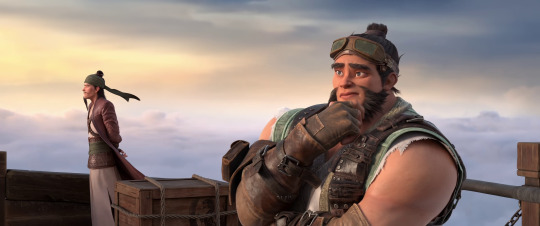
Xiaotian is Erlang’s dog sidekick who helps him subdue evil spirits and never leaves his side. The movie’s version of Xiaotian seems to be inspired by ancient paintings depicting her as a white hound.

The wanted bulletin printer seems to be inspired by a Hu Shi Ren You (虎噬人卣), a tiger-shaped Ancient Chinese wine vessel.


In Chinese mythology, Penglai is a legendary island for immortals. It has been reimagined to be the equivalent of the CBD of the divine realm.
The dice used in the casino are 18-sided Xing Jiu Ling (行酒令) from the Han Dynasty. It has the numbers 1 to 16, along with the characters for "wine" and "arrogance" engraved in gold and silver. The rat is the first animal of the Chinese Zodiac.
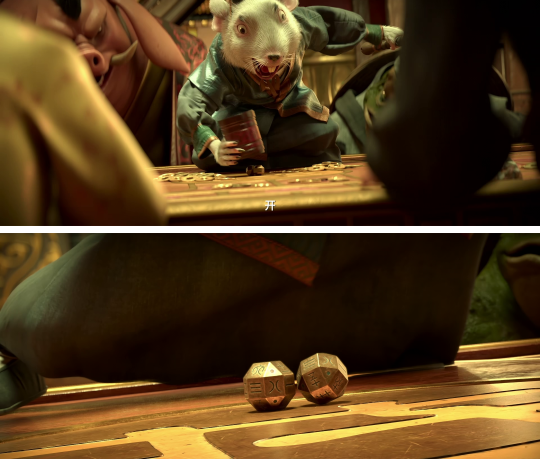
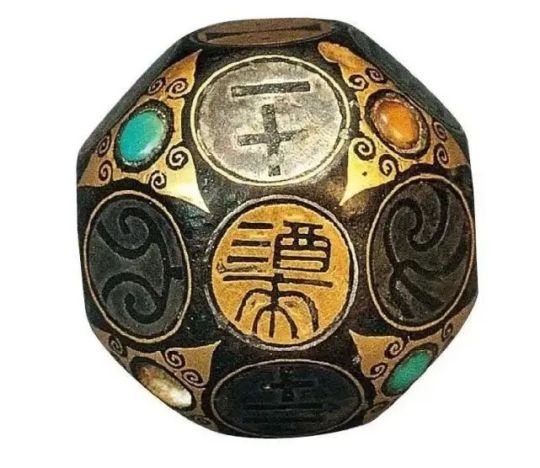
Shunfeng’er (顺风耳), who now goes by Old Gao and works at the casino, was usually accompanied by Qianliyan (千里眼). They are two temple guards whose names translate to “all-hearing” and “all-seeing” that could hear and see things from thousands of miles away.

Light Chaser is serious about its monkey business. The way casino monkey grabbed Yang Jian’s tally with his foot, the big ape miming and even in Nezha Reborn where the little monkey imitated Yunxiang.
Fun fact: The monkey is voiced by Yang Tianxiang, the same actor who voiced Li Yunxiang (Nezha) in Nezha Reborn.

Refresher - Primordial Spirit, known in Chinese as yuanshen (元神), is is a concept in Daoism defined to be a level of existence surpassing that of physical existence. In the New Gods universe, they manifest as giant glowing avatars.

New Gods also has a recurring theme of lost Astras - In Nezha Reborn, Wukong’s staff is nowhere to be found and Yunxiang has only recovered Nezha’s Sky Ribbon so far. Among Erlang’s many Astras, three are mentioned in the movie.
Yang Jian’s headdress is designed to resemble his signature trident, the "three-pointed, double-edged lance". Hence when casino monkey asked him where his weapon was, he clinked the headdress.

This weapon was later shown in a flashback:

Another one of his Astras is a golden bow with silver bullets. According to the director, it was melted into his harmonica (although this was probably retconned as in the teaser for the sequel, it was his mother who gave it to him as a child). The harmonica not only has the powers of his bow, but is also the ignition key for his ship.



The third weapon featured is his mountain-cleaving axe (开山斧). It is the axe he used to split Peach Mountain in half to save Yaoji. He is shown wielding the same axe in the opening montage 1500 years earlier and it is currently wedged inside the Lotus Peak of Mount Hua from the events of 12 years ago. Needless to say it is a powerful Astra with earth-shattering capabilities.


The Four Diablo Brothers - Mo Lihong, Mo Liqing, Mo Lihai, and Mo Lishou - were initially antagonists in IOTG, having launched an attack on the Western Foothills. This led to the introduction of Yang Jian, who helped defeat the brothers.
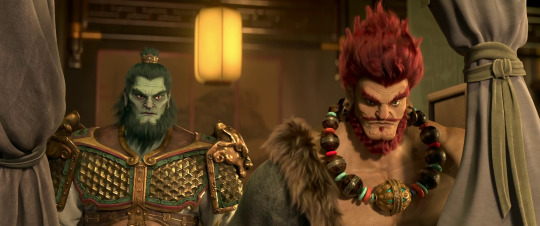
By the conclusion of the novel, they were enshrined as the Four Heavenly Kings - Vaiśravaṇa, king of yakṣas (多闻天王; Duowen Tianwang), Virūḍhaka, king of kumbhāṇḍas (增长天王; Zengzhang Tianwang), Dhṛtarāṣṭra, king of gandharvas (持国天王; Chiguo Tianwang) and Virūpākṣa, king of nāgas (广目天王; Guangmu Tianwang). In the movie, only Mo Liqing was addressed by his title when Shen Gongbao met him inside the lighthouse.

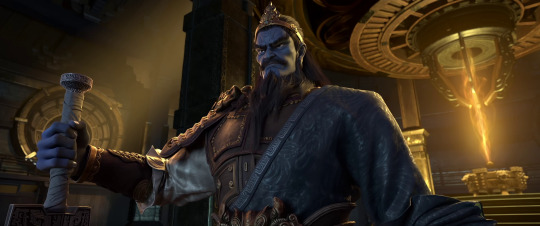
There's a PSA on the noticeboard with a picture of Nezha pissing. It reads "no urinating or defecating here." This might be a piss (pun intended) at the 2019 animation Ne Zha from a rival studio, and its hilarious promo. The shade 💀



Further supporting my theory that White Snake and New Gods are from the same universe, Precious Jade from White Snake is recruiting!!! And medicine boy plugging his illegal business lol.
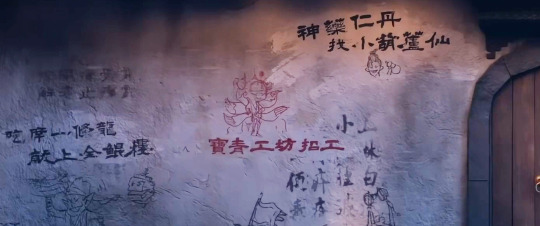
Jinxia Cave (金霞洞), lit. Gold Sunset Cave is Yuding’s HQ. It is located on Jade Spring Mountain in the Divine realm.
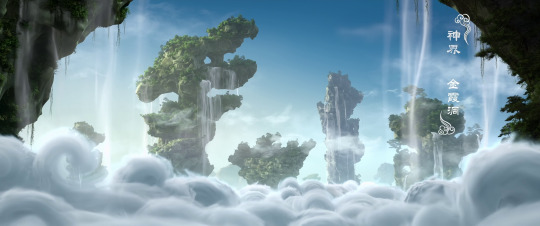
The little disciple playing the flute is a tribute to the 1963 ink animation “The Bamboo Flute” (牧笛) produced by Shanghai Animation Film Studio.

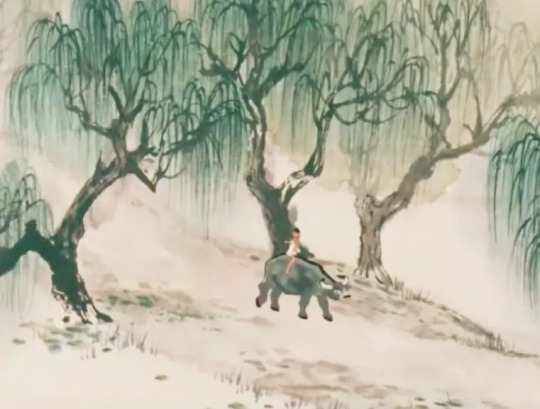
Yuding is one of the many disciples of Yuanshi Tianzun, one of the highest deities of Daoism known as the Primeval Lord of Heaven. Yuding is ranked 10th among the “12 golden disciples”, and among his peers are Jiang Ziya (the main character of IOTG who led the battle against Shang), Taiyi Zhenren (Nezha’s master) and Shen Gongbao etc. They are all practitioners of Chan Daoism, also known as Kunlun Sect, founded by Laozi and Yuanshi Tianzun.
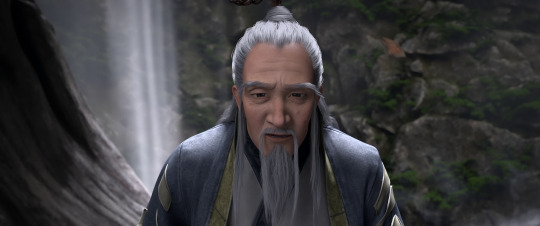
In the tale of the Magic Lotus Lantern, Chenxiang was the son of Yang Chan AKA Goddess San Shengmu AKA the holy mother of Mount Hua AKA Erlang’s sister, and a mortal scholar named Liu Yanchang. This parallels the Yang siblings’ own origin story as the children of a goddess and a mortal.
Chenxiang literally means Agarwood. It is a revered wood valued for its use in incense and traditionally burned during meditation.
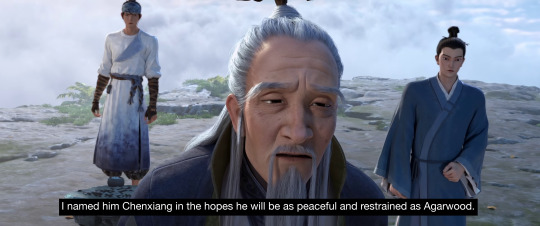
The place on Jade Spring Mountain where Yuding sealed the sect brother’s Dharmakaya (the embodiment of the truth itself, a transcendence of the physical and spiritual bodies) is based on the travertine pools in and around Jiuzhaigou, Sichuan. Notably, a scene from Journey to the West, a story associated with Erlang, was once filmed at one of the waterfalls here. I’ve been here and yes, it looks exactly like this irl.
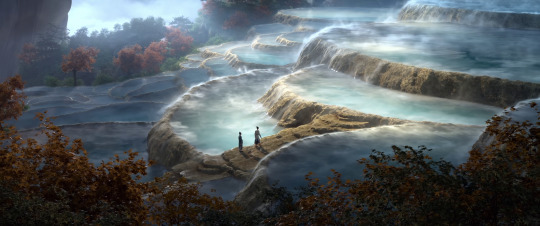
Part 2|Part 3|Part 4
#erlang shen#new gods#yang jian#wukong#new gods: yang jian#新神榜#二郎神#杨戬#新神榜:杨戬#xin shen bang#jttw#investiture of the gods#lotus lantern#light chaser#xsb#still laughing at the nezha shade
238 notes
·
View notes